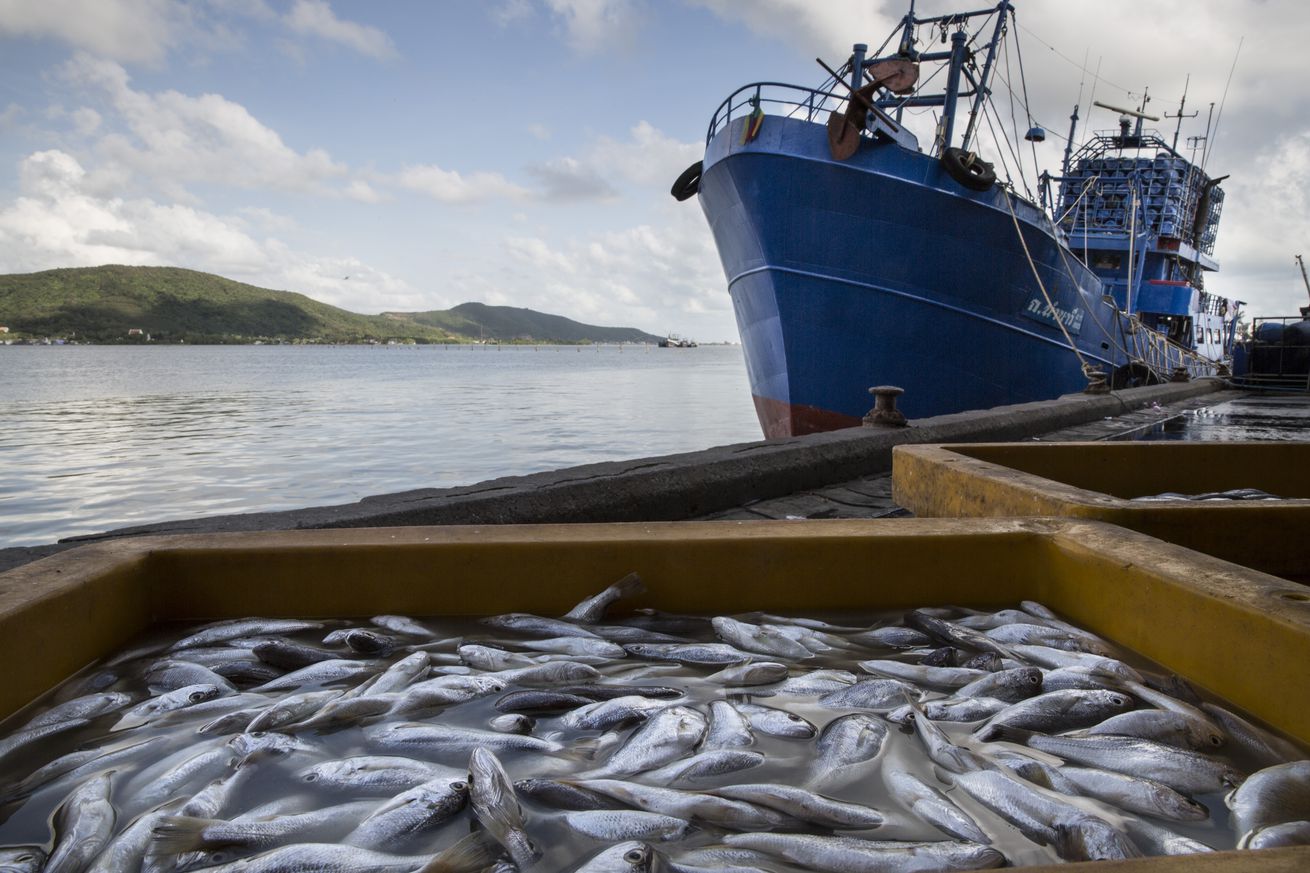Slavery and overfishing on the high seas can’t hide from these researchers
 Fish are seen after being unloaded from a boat at the port in Songkhla on February 2, 2016. Around 100 people have been arrested by authorities in a recent crackdown on abuses involving Thailand's multi-billion dollar seafood industry. The deep-rooted problem caused the huge global brand, Nestle in 2015 to admit that it had discovered clear evidence of slavery at sea in parts of the Thai supply chain. | Photo by Paula Bronstein / Getty Images
Fish are seen after being unloaded from a boat at the port in Songkhla on February 2, 2016. Around 100 people have been arrested by authorities in a recent crackdown on abuses involving Thailand's multi-billion dollar seafood industry. The deep-rooted problem caused the huge global brand, Nestle in 2015 to admit that it had discovered clear evidence of slavery at sea in parts of the Thai supply chain. | Photo by Paula Bronstein / Getty Images A tracking system designed to help ships avoid crashing into each other has become an important tool for spotting bad behavior on the high seas. Researchers can now put a spotlight on corporations that dominate fishing in unregulated international waters where it's easier to get away with overfishing. And it's giving us a better idea of how widespread slave labor could be on fishing vessels.
That all makes it easier to make companies answer for any abuses they commit
Two recently published papers use this technology, the maritime Automatic Identification System (AIS), to make high-seas fishing a little less mysterious. The first study, published in the journal One Earth on December 18th, traces the origins of thousands of high-seas...